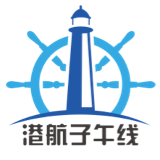Port Integration Shifts Inland. How Can the Walls Be Broken?
CATEGORY:Port
FROM:National Business Daily, edited by E-PORTS
08 / Dec / 2021
A wave of port integration is spreading from coastal provinces inland along the Yangtze River.
The latest event occurred on December 6, when provincial authorities launched the Anhui Province Shipping Group, which will merge 10 different shipping companies. According to the plan, this merger aims to create a unified platform for the province to open its economy, and build the shipping group into a river and sea transportation hub for the middle and lower reaches of the Yangtze River, connecting east and west.
Just last month, Sichuan Province announced its “Three Port Integration” plan. Sichuan Provincial Investment Group and the municipal governments of Luzhou and Yibin signed the Luzhou Port-Yibin Port Integrated Development Agreement to pool resources in investment, development and operation.
What lies behind the recent round of integration?
Anhui Provincial Party Committee Secretary Li Jinbin says that pooling port resources “is an inevitable requirement to implement General Secretary Xi Jinping’s discussions on developing the Yangtze River Economic Belt. It is also a realistic choice to seize the high-ground in the next round of port competition”. Analysts point out that all regions have established port asset management platforms to coordinate development and improve efficiency. “One Province, One Port” will become the future pattern of port operation in China.
“Port integration is a major trend”, according to Peng Zhimin, director of the Yangtze River Basin Economic Research Institute at the Hubei Provincial Academy of Social Sciences. “Currently, this takes place through merging provincial investment or port groups to create stronger actors. In addition to increasing their own strength, this merging also provides a stronger platform for cooperation with external actors, providing more leverage in bargaining”.
More importantly, this is not only related to inter-provincial competition, but also coordinated development. The Yangtze River Economic Belt is a unified playing field. As transportation capacity in the region becomes saturated, provinces must shift towards differentiated development through cooperation. Only this way can the economic belt’s full economic potential be brought to bear.
An imperative
The Yangtze River, with a total length of 6,300 kilometers, is the third longest river in the world. It is the only navigable water body that runs across the east, middle and west of China. It spans nine major provinces and cities, with the middle and lower reaches ice-free all year round. It is a world-renowned “golden waterway”.
Statistics indicate that trunk cargo throughput on the Yangtze River increased from 800 million tons to 1.66 billion tons between 2005 and 2011, an average annual growth rate of 16.9%.
In 2017, trunk cargo throughput on the river reached 2.5 billion tons, an increase of more than 8.2% year-on-year, and pushing it comfortably into the number one spot over the world’s most trafficked rivers.
With a great river comes great ports. So far, the Yangtze River trunk lines have spurred 14 100-million-ton ports, with 581 10,000-ton scale berths. At the same time, conditions for water transport along the Yangtze River have improved gradually. Upstream for example, the maintained depth of the waterway between Chongqing and Yibin has been increased from 1.8 to 2.9 meters, reaching Class III waterway standard. The 2003 Three Gorges Dam Project has greatly improved waterway conditions due to its reservoir. By the end of 2016, the annual cargo throughput on the Three Gorges Dam section exceeded 130 million tons.
Data shows that the Yangtze River’s shipping activity in 2016 was four times that of the US’ greatest river, and the fourth longest in the world, the Mississippi River. However, shipping on the Yangtze River still faces many constraints.
Wu Xiaohua, deputy director of the National Development and Reform Commission’s Macroeconomic Research Institute, previously concluded that “the lower Yangtze River is being strangled, making it unsuitable for large oceangoing vessels to enter the river or for direct river-sea traffic. The middle Yangtze faces blockages, while the upper river is a bottleneck. These issues make shipping on the Yangtze difficult.”
For example, the 170-million-ton limit of the ship locks at the Three Gorges Dam is about to be broken. Media has learned from many freight companies that long queues are forming at the dam, with waiting times reaching five days, greatly reducing transportation efficiency.
The river’s problems are due to shore-based issues. Fan Yijiang, deputy director of the Comprehensive Research Office at the National Development and Reform Commission’s Comprehensive Transportation Research Institute points out that homogenous competition between ports along the Yangtze River has spread to every county. Such vicious competition makes it difficult to achieve effective coordination. With scattered shore resources it is hard to form economies of scale.
You can say that port integration has reached a very critical point.
In August this year, the Ministry of Communications issued the “Three-Year Action Plan for Deepening Development of Multimodal Transport in the Yangtze River Economic Belt”, revising the “National Inland Waterway and Port Layout Plan” and compiling the overall plans for each port into a comprehensive development plan. In particular, they proposed establishing provincial-level port enterprises to strengthen resource integration and promote regional port operation integration.
According to Peng Zhimin, integrating ports in coastal provinces like Jiangsu can bring new opportunities for developing upstream ports. Upstream-downstream linkages promote economic development of the entire Yangtze River Economic Belt.
Where do you break through?
However, port integration is not simply a matter of adding ports.
First let’s look at the issue of the ports themselves. For a long time, the lack of overall planning has caused the inland economy and industrial structure to be similar, with overlapping competition between ports creating a serious excess transport capacity at regional ports.
Take, for example, Shandong’s Rizhao Port and Jiangsu’s Lianyungang Port. The distance between the two is barely 30 kilometers, and the main cargo is iron ore. The short distance and cargo homogeneity is causing bitter fighting between them over traffic.
Some industry insiders say today’s port functions have undergone a marked “quality change” compared to the past. Modern port competition is evolving into a more full-scale competition between supply chains, wherein the ports participate. Therefore, overall planning and coordination has become key to integrate ports. However, in terms of long-term and independent port development, coordination is no easy matter.
Take Jiangsu Province, a major port province, as an example. Suzhou, Lianyungang, Huai’an are all 100-million-ton ports, each generating huge flows of people, logistics and capital. Counting them together creates even more unimaginable numbers. Because of this, the “information” complications constitute the first mountain to traverse in integrating Jiangsu’s ports.
Our reporter has learned that “the new model of province-level smart shipping” first appeared in Jiangsu during its port integration process. Jiangsu Port Group Chairman Wang Yongan explains that the “integration shift” for ports in the end is about pooling resources.
“This is not simply about combining assets, but organically unifying elements of production, operation and management at each port through informationization. Thus you can gather information on a large number of fragmented sources, customers, routes, schedules and railways.”
However, Peng Zhimin also points out that ports must pay attention to one problem when promoting informationization: “many ports are promoting informationization, but they often build separate, distinct systems. This is unfavorable. It is necessary to facilitate interconnection and promote information sharing.”
No matter if it’s regarding Anhui, Jiangsu or Sichuan, “speeding up formation of unified, province-level port investment, development and operation actors” is a top priority. It is an effective way to dismantle traditional local barriers and break up data islands through informationization. However, as for the concrete results of this process, only time can tell.
Furthermore, in addition to integrating provincial ports, it is also necessary to break with the inter-provincial competitive mindset if the Yangtze River Economic Belt is to become more effective. Differentiated development and cooperation must become the new trend. But to reach this step, more time is needed.
从沿海省份刮起的港口整合大潮,正沿长江水道向内陆蔓延。
最新动向是:12月6日,安徽省港航集团有限公司揭牌,将整合省内10家港航企业。根据规划,此次整合目的是打造全省对外开放的统一平台,并将安徽港口群打造成为联通东西部和长江中下游的河、江、海联运枢纽。
就在上月,四川“三港整合”也传来新消息——四川省交投集团和泸州、宜宾两市签署泸州港-宜宾港整合发展协议,以在投资、开发、运营等方面实现“一盘棋”。
这轮港口整合的背景是什么?
如安徽省委书记李锦斌所说,推动港口资源整合,“是贯彻落实习近平总书记关于推动长江经济带发展重要论述的必然要求,也是抢占新一轮港口经济竞争制高点的现实选择”。有分析指出,各地为协调发展提升效益,陆续成立港口资产管理平台,“一省一港”或将成为中国港口未来格局。
“港口整合是大趋势。”湖北省社科院长江流域经济研究所所长彭智敏告诉自贸君:“现在一般是通过省交投或港口集团进行整合,形成实力比较强的整体,除提升自身实力外,跟外部合作时平台更高,也更有讨价还价余地。”
更重要的是,这不仅事关省际竞争,更事关协同发展——长江经济带是一整盘棋,随着长江运力日趋饱和,各省份要通过合作实现差异化发展,才能发挥长江经济带最大效用。
势在必行
长江,全长6300公里,世界第三长河,我国唯一贯穿东、中、西部的交通水脉。它横跨九大省市, 中下游地区常年无冰冻,是闻名世界的“黄金水道”。
统计显示,2005年至2011年间,长江干线货物通过量从8亿吨增长至16.6亿吨,年均增长率达16.9%。
2017年,长江干线货物通过量更达到25亿吨,同比增长8.2%以上,稳居世界内河首位。
大江孕育大港。截至目前,长江干线共诞生14个亿吨大港,包含581个万吨级泊位。其间,长江水运条件也不断改善。比如,在上游地区,重庆至宜宾航道维护水深从1.8米提高至2.9米,达到III级航道标准。2003年三峡工程蓄水让库区航道条件得到极大改善,至2016年底,三峡坝区断面货物年通过量突破1.3亿吨。
此前,国家发改委宏观经济研究院副院长吴晓华总结称:“长江下游航道‘卡脖子’,不适应大型海船进江和江海直达需要,中游航道‘肠梗阻’,上游航道‘瓶颈’,这些造成了长江航道不畅。”
数据显示,2016年,长江完成航运量是美国最大河流、世界第四长河——密西西比河的4倍,但长江航运功能依然受到诸多制约。
比如,在三峡,船闸极限通过量1.7亿吨即将被突破。自贸君从不少物流企业处了解到,在三峡排队过坝的船只常常“排起长队”,等待时间甚至达5天之久,大大降低运输效率。
江上的问题,根源在岸上。国家发改委综合运输研究所综合研究室副主任樊一江指出,长江沿岸港口的同质竞争,已经延伸到“每个县”这样的细小单位上。这种恶性竞争,使航运难以得到有效协调,岸上资源过于分散,难以形成规模效应。
可以说,整合港口已经到了十分紧要的地步。
今年8月,交通部印发《深入推进长江经济带多式联运发展三年行动计划》,将修编《全国内河航道与港口布局规划》、完善各港总体规划写进计划表。其中特别提出,将推动成立省级港口企业集团,加强资源整合,促进区域港口一体化运营。
在彭智敏看来,江苏等沿海省份港口整合,能够为上游港口发展带来新机遇。通过上下游联动,推动整个长江水域经济发展。
从哪突破?
但港口整合,绝不是各个港口简单相加。
先看港口本身的问题。一直以来,由于缺乏整体规划、后方腹地经济和产业结构趋同等原因,港口与港口之间同质化竞争,区域港口运能结构性过剩问题十分严重。
比如,山东日照港和江苏连云港港,两地海上距离仅30多公里,且主要货物都是铁矿石,这种距离近、产品同质化导致的“掐架”现象,并不少见。
有业内人士感慨,如今的港口功能与过去的港口功能相比,已发生“质的改变”,现代港口竞争正演变为港口所参与的供应链之间的全方位竞争。于是,统筹与协调,成为港口整合的关键。但对于长期独立发展的港口而言,协调并非易事。
以港口大省江苏为例,苏州、连云港、淮安等都是亿吨大港,每个港口产生的人流、物流、资金流信息量庞大,汇总起来更无法想象。因此,江苏港口整合,庞杂的“信息”便是统筹协调的第一座大山。
自贸君也注意到,在港口整合过程中,“全省智联港航新模式”是江苏打出的一记重拳。江苏省港口集团董事长王永安解释,港口“一体化转型发展”,归根结底是资源整合。
“这不是资产的简单组合,而是要通过信息化手段,将各港口的生产、经营、管理等要素有机统一,将大量碎片化货源、客户、航线、航班、铁路等信息归纳集中。”
不过,彭智敏也指出,港口推进信息化要注意一个问题,“很多港口都在推动信息化,但往往是各成体系,这是不利的,需要形成互联互通、实现信息共享”。
当前,无论安徽、江苏还是四川,“加快形成港口投资、开发、运营全省‘一盘棋’格局”,都是当务之急。以信息化为“利刃”破除原有属地壁垒、打破数据孤岛,不失为有效方式,但具体效果如何,还需等待时间检验。
更进一步说,要让长江经济带发挥更大效用,除了省内港口整合,还需破除省际竞争思维,进行差异化发展与合作。而要走到这一步,可能还需要更长时间。
An Ultra-large Container Ship of Evergreen Group Stranded, Causing the blockade in Suez Canal!
FROM:www.52shipping.com
29 / Mar / 2021
China Exempt Port Construction Fees for Q2 to Boost Market
FROM:MarineCircle, edited by E-PORTS
09 / Mar / 2020
194 passenger ships in Zhoushan underwent “physical examination” conducted by maritime authorities ahead of Spring Festival travel rush
FROM:Zhoushan Maritime
20 / Jan / 2021
DP World will Introduce Automatic Vehicles to JA Port
FROM:E-PORTS
15 / Jun / 2020
The Latest Port Congestion Situation of Main Chinese Ports (Capesize Vessel)
FROM:E-PORTS
18 / Jul / 2023
[E-PORTS News] Super Typhoon "Lekima" Approaching the Coast
FROM:E-PORTS
14 / Jul / 2023
[E-PORTS News] Qingdao Port Group Becomes the First Waste Classification Pilot Unit in the West Coast New District
FROM:zgsyb.com, edited by E-PORTS
14 / Jul / 2023
Yantian Port reworked at full speed. It may take a month for the container terminal to return to normal.
FROM:xinde_marine
13 / Jul / 2021
[E-PORTS News] Ningbo-Zhoushan Port's Container Throughput Breaks 20 Million TEUs
FROM:Beyong Shipping, edited by E-PORTS
18 / Jul / 2023
The Impact on Australian Coal Industry Continues! Australian Officials: Xiamen Port and Bayuquan Port Refused to Purchase Coal
FROM:www.sol.com.cn
12 / Mar / 2021








